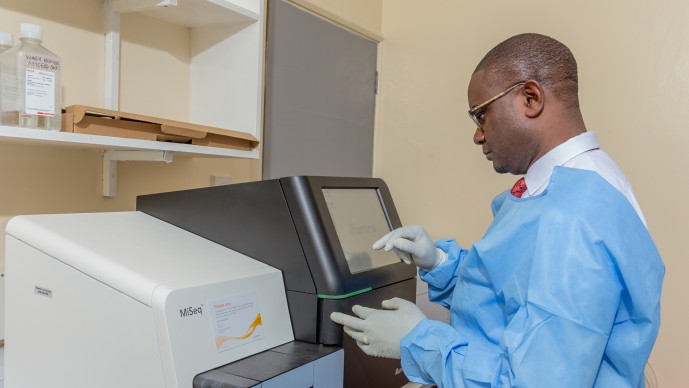The number of Kenyan women dying during childbirth remains stubbornly high, which means Kenya may not achieve the sustainable development goal targets, experts say.
Currently, about 355 deaths women die for every 100,000 live births. This roughly translates to about 6,000 deaths every year – or 16 expectant women dying every day.
The SDG target 3.1 is to reduce maternal mortality to less than 70 maternal deaths per 100,000 live births by 2030.
Prof Moses Obimbo from UoN School of Medicine said maternal mortality is perpetuated by five main causes – also known as the big five in maternal health circles. They are Postpartum Haemorrhage (PPH), sepsis, post-abortion complications, hypertensive disorders including preeclampsia and obstructed labour.
“This is the reality we live with. We have something that we know is claiming mothers’ lives day in day out and not much has been done to bring it to a stop,” he said.
He spoke at a meeting to announce the first-ever maternal mortality run, dubbed PPH Run, aimed at lowering the deaths in Kenya, next weekend.
It is organised by the University of Nairobi (UoN), the Kenya Obstetrical and Gynaecological Society (KOGS) and the Midwives Association of Kenya (MAK).
“PPH is the biggest cause of maternal mortality; accounting for about 40 per cent of deaths,” Prof Obimbo, who is also the project lead said.
“Starting October 2024 we will be holding an annual PPH Run – aimed at creating awareness and raising resources that will help us bring down maternal mortality.”
PPH is defined as blood loss higher than 500ml of blood (for vaginal birth) or 1,000ml (for Caesarean Section).
PPH usually occurs due to the following scenarios: one, a uterus that has not contracted; termed uterine atony.
The second is the presence of retained placenta tissue – or some material – in the uterus. This prevents the uterus from fully contracting leaving its blood vessels open.
The third is trauma that could have occurred in the perineum or on the cervix or any other part of the reproductive system – causing a tear.
Lastly, women who do not have sufficient clotting factors to stop blood loss after delivery of a child.
Prof Julius Ogeng’o, a professor of Human Anatomy and former Deputy Vice Chancellor for Academic Affairs at the University of Nairobi, said the easiest way to reduce the deaths is to end PPH.
“I have seen people marshal resources and do so much for courses that – while good for human progress – are nowhere near as deadly as PPH. We know that PPH is killing women every single day. This is surely something that we should have started a run for many years ago. Nevertheless, I am happy that it is finally here.”
Dr Anne Kihara, the President of the International Federation of Gynaecology and Obstetrics (FIGO), noted the existential crisis many pregnant women face.
She said: “As clinicians we tell these women to eat healthy – a balanced diet. We tell them to take care of themselves and to rest enough. We ask them to get to the hospital as soon as they suspect that something is wrong with the pregnancy.”
She added: “But the reality of many of these women’s lives is that they don’t have the money to afford balanced diets. They don’t have the resources that would allow them to rest when necessary; some have to still fend for the family through hard work while heavily pregnant.”
Despite Kenya’s official figures the United States Agency for International Development (USAID) report on Preventing Child and Maternal Deaths 2024 states that Kenya’s maternal mortality is higher at 594 deaths per 100,000 live births.
“The run will start (and end) at Ulinzi Sports Ground off Lang’ata Road in Nairobi,” Prof. Obimbo said. “Everyone is welcome to run with us.”
Many of the women who survive also experience long-term health complications, including injuries, infections, disabilities, and illnesses such as obstetric fistula, the Ministry of Health says.
The risk of maternal mortality is highest among adolescent girls due to the high complications in pregnancy and childbirth with pregnancy complications contributing to 16 per cent of the deaths among female adolescents.


















